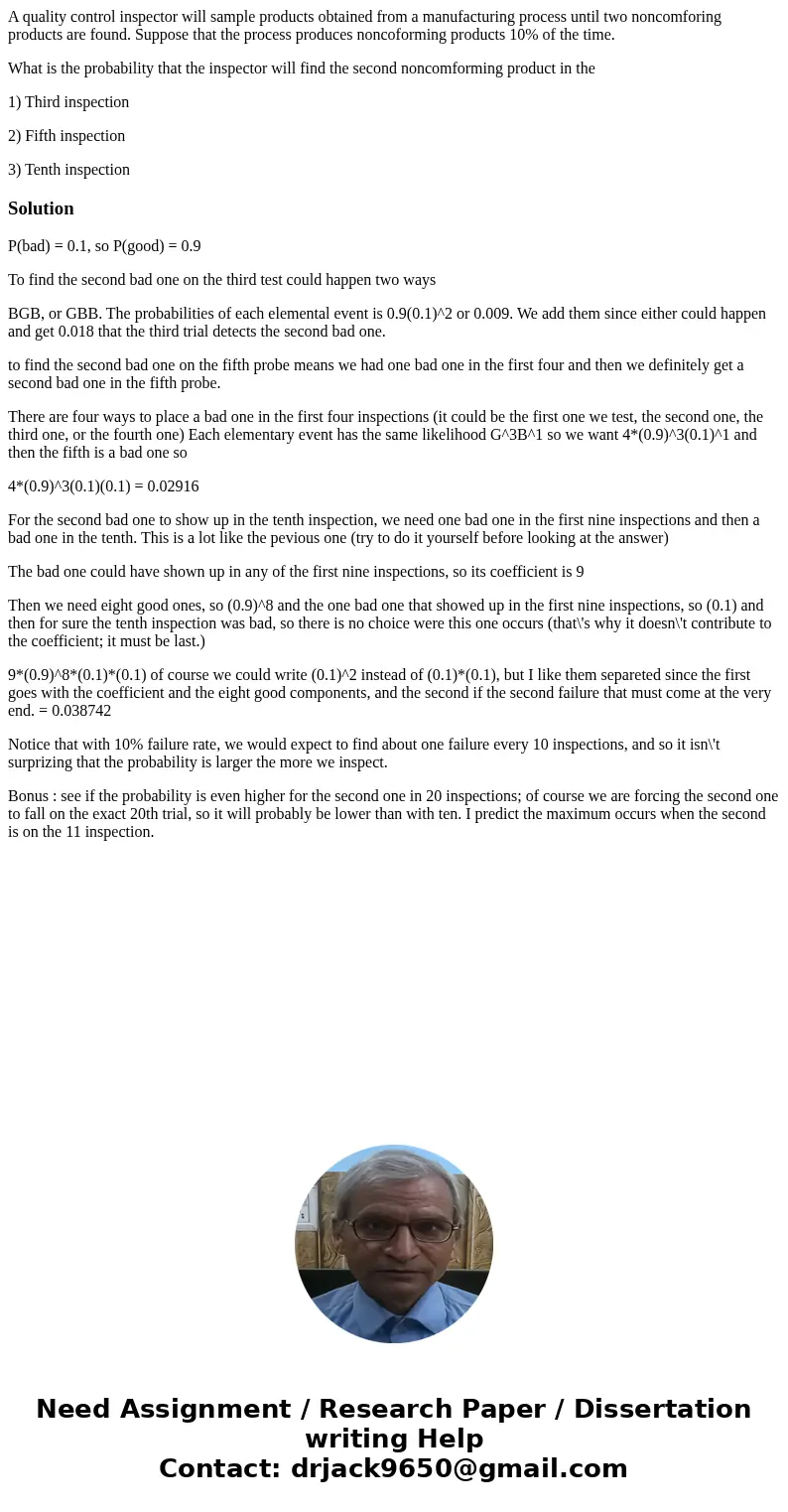A quality control inspector will sample products obtained fr
A quality control inspector will sample products obtained from a manufacturing process until two noncomforing products are found. Suppose that the process produces noncoforming products 10% of the time.
What is the probability that the inspector will find the second noncomforming product in the
1) Third inspection
2) Fifth inspection
3) Tenth inspection
Solution
P(bad) = 0.1, so P(good) = 0.9
To find the second bad one on the third test could happen two ways
BGB, or GBB. The probabilities of each elemental event is 0.9(0.1)^2 or 0.009. We add them since either could happen and get 0.018 that the third trial detects the second bad one.
to find the second bad one on the fifth probe means we had one bad one in the first four and then we definitely get a second bad one in the fifth probe.
There are four ways to place a bad one in the first four inspections (it could be the first one we test, the second one, the third one, or the fourth one) Each elementary event has the same likelihood G^3B^1 so we want 4*(0.9)^3(0.1)^1 and then the fifth is a bad one so
4*(0.9)^3(0.1)(0.1) = 0.02916
For the second bad one to show up in the tenth inspection, we need one bad one in the first nine inspections and then a bad one in the tenth. This is a lot like the pevious one (try to do it yourself before looking at the answer)
The bad one could have shown up in any of the first nine inspections, so its coefficient is 9
Then we need eight good ones, so (0.9)^8 and the one bad one that showed up in the first nine inspections, so (0.1) and then for sure the tenth inspection was bad, so there is no choice were this one occurs (that\'s why it doesn\'t contribute to the coefficient; it must be last.)
9*(0.9)^8*(0.1)*(0.1) of course we could write (0.1)^2 instead of (0.1)*(0.1), but I like them separeted since the first goes with the coefficient and the eight good components, and the second if the second failure that must come at the very end. = 0.038742
Notice that with 10% failure rate, we would expect to find about one failure every 10 inspections, and so it isn\'t surprizing that the probability is larger the more we inspect.
Bonus : see if the probability is even higher for the second one in 20 inspections; of course we are forcing the second one to fall on the exact 20th trial, so it will probably be lower than with ten. I predict the maximum occurs when the second is on the 11 inspection.

 Homework Sourse
Homework Sourse